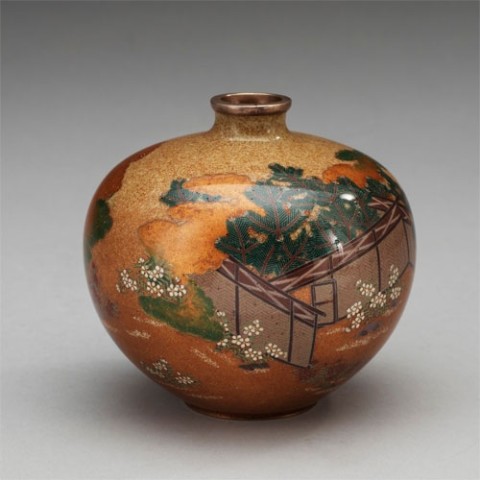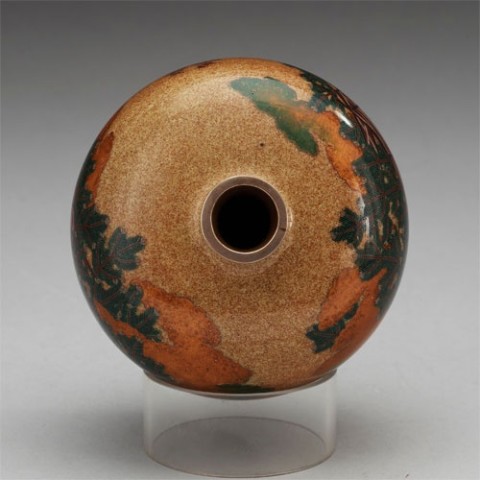Of round bulbous form with a short gently everted neck, worked in gilt wire and various cloisonné enamels on a variety of mottled enamel grounds, the vase decorated with a design of panelled walls behind which dark green flowering pine-trees grow surrounded by misty clouds in green and orange goldstone, scattered clusters of red and white flowers issue from the ground or from rockwork, all set on a mottled brown and orange ground fading into a lighter shade of brown at the top, the neck mounted in silver, a thin foot-ring revealing the copper base, the gently concave base decorated with two finely detailed butterflies on a light brown mottled ground.
Literature
Distinguished by its beautiful polish and striking colors, Japanese enamelware was above all a technical triumph. Cloisonné, or shippo, is one of the most intricate types of enamel manufactured. Artists begin by molding, cutting and attaching copper wires to a substrate, most often of metal, following the intended design. The spaces between the wires are filled in with vitreous enamel powder of the chosen colors before the piece is fired and refilled as required, and then ground to a lustrous polish.




